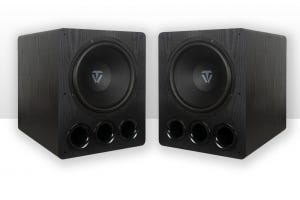
HDMI has become a staple in all of our home electronic systems -- we use it for our TVs, gaming consoles, monitors, DVD players, and more. Because so many devices rely on HDMI connections these days, we often find that we have too many HDMI cables and not enough ports to plug them in. This problem calls for HDMI splitters and switches. Although these devices are often referred to interchangeably, they serve different purposes. So, what's the difference and how do you know which one you need?
Put simply, HDMI splitters duplicate an HDMI signal from a single input and send it to multiple outputs; HDMI switches receive HDMI signals from multiple inputs and send them to the same output.
Let's take a closer look at how each of these devices works and when you should use them.
HDMI Splitters
As stated before, HDMI splitters are for taking one signal source and sending it to many outputs. You need an HDMI splitter when you want to send the signal from one device like a media player or gaming console to multiple outputs such as TVs or monitors, and you don't have enough HDMI ports on the source device. If your Xbox only has one HDMI port and you need to display it on two monitors, you need an HDMI splitter.
There are two kinds of splitters: active and passive. Just like hi-fi speakers, passive splitters do not require power to split an HDMI signal. They are more affordable than active splitters and have more limitations, but will work fine for most simple setups. Passive splitters run into problems when long HDMI cables are used or the signal needs to be sent to more than two devices. The biggest drawback of HDMI signals is that splitting the signal makes it weaker, so you may notice interference such as choppy audio or the signal cutting in and out. Active splitters require power from an outlet in order to deliver a stronger signal. An active splitter is required for splitting a signal over long cable distances, or for splitting an HDMI signal to more than two outputs. These are more expensive than passive splitters, but offer a more reliable signal.
HDMI Switches
HDMI switches serve the opposite purpose of a splitter: they manage multiple input sources being sent to the same output. This allows you to connect multiple devices -- gaming consoles, DVD players, media players -- to the same TV or monitor HDMI port. This is useful if you have more devices than ports on your TV, and you don't want to unplug your devices all the time. An HDMI switch allows them to all be connected at once and lets you control which input is sent to the TV.
Switches always require power, so they must be plugged into an outlet, and they must be placed where they can reach all of your devices and your TV or monitor. The biggest difference between HDMI switches is the number of inputs they can manage. Otherwise, all switches serve the same purpose. It may be worthwhile to invest in a high quality HDMI switch to have a more reliable signal. This is especially true for transmitting hi-definition signals such as a home theatre setting. If you want to connect a 4K signal, you should check that the HDMI switch can support 4K. Investing in high quality HDMI cables is another way to make sure your signal maintains its quality and strength.
HDMI Matrix
There is also another device that combines the jobs of a splitter and a switch: an HDMI matrix. Also known as an HDMI multiplex, this device can receive multiple HDMI inputs and send them to multiple outputs. These are useful for complex audio-visual installations where many devices need to connect to multiple displays. If you don't have a specific need for an HDMI matrix, you're probably better off using a splitter or a switch. Multiplexes can be more expensive and low quality ones won't be able to produce a reliable signal over long distances or with multiple devices.





